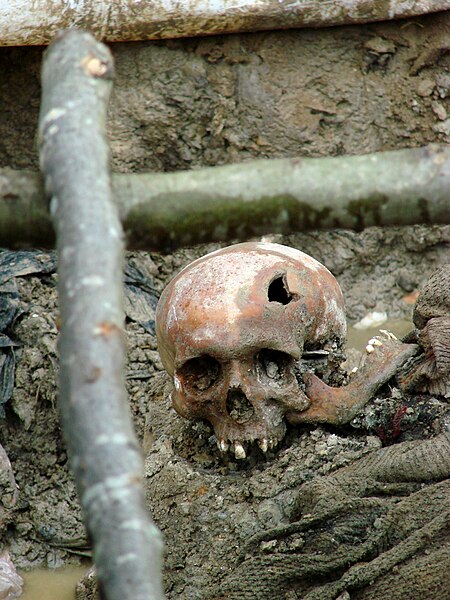
During a brief military ceremony in Sarajevo, Bosnia-Herzegovina, French General Bernard Janvier, head of the United Nations peacekeeping force, formally transfers military authority in Bosnia to U.S. Admiral Leighton Smith, commander of North Atlantic Treaty Organization (NATO) forces in Southern Europe.

The solemn ceremony cleared the path for the deployment of 60,000 NATO troops to enforce the Dayton Peace Accords, signed in Paris by the leaders of the former Yugoslavia on December 14. The U.S.-backed peace plan was proposed during talks in Dayton, Ohio, earlier in the year and was reluctantly accepted by the last of the belligerent parties in November, ending four years of bloody conflict in the former Yugoslavia, which cost more than 200,000 lives.

The United Nations peacekeeping mission to Bosnia began in early 1992, shortly after the war erupted over efforts by the Bosnian Serbs to achieve independence from Bosnia-Herzegovina and unite with Serbia. Although the U.N. force was crucial in distributing humanitarian aid to the impoverished population of Bosnia, it was unable to stop the fighting. Approximately 25,000 U.N. peacekeepers served in Bosnia over three and a half years, and during that time 110 of those were killed, 831 wounded, and hundreds taken hostage.
The NATO force, with its strong U.S. support and focused aim of enforcing the Dayton agreement, was more successful in bringing stability to the war-torn region.
Bosnian War (1992–1995)

On 18 November 1990, the first multiparty parliamentary elections were held. A second round followed on 25 November, resulting in a national assembly where communist power was replaced by a coalition of three ethnically based parties.[59] Croatia and Slovenia's subsequent declarations of independence and the warfare that ensued placed Bosnia and Herzegovina and its three constituent peoples in an awkward position. A significant split soon developed on the issue of whether to stay with the Yugoslav federation (overwhelmingly favored among Serbs) or seek independence (overwhelmingly favored among Bosniaks and Croats).

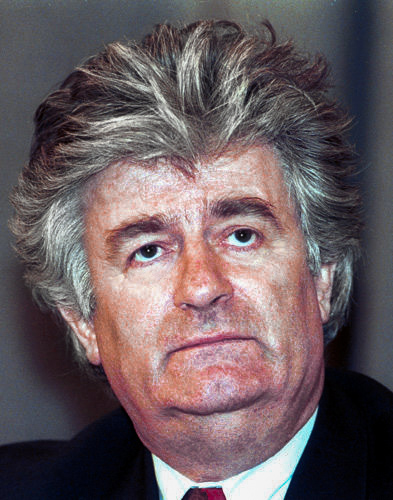

The Serb members of parliament, consisting mainly of the Serb Democratic Party members, abandoned the central parliament in Sarajevo, and formed the Assembly of the Serb People of Bosnia and Herzegovina on 24 October 1991, which marked the end of the tri-ethnic coalition that governed after the elections in 1990. This Assembly established the Serbian Republic of Bosnia and Herzegovina on 9 January 1992, which became Republika Srpska in August 1992.

On 18 November 1991, the party branch in Bosnia and Herzegovina of the ruling party in the Republic of Croatia, the Croatian Democratic Union (HDZ), proclaimed the existence of the Croatian Community of Herzeg-Bosnia, as a separate "political, cultural, economic, and territorial whole", on the territory of Bosnia and Herzegovina, with Croat Defence Council (HVO) as its military part.[60]

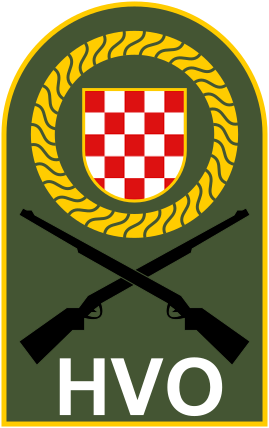
The Bosnian government did not recognize it. The Constitutional Court of Bosnia and Herzegovina declared Herzeg-Bosnia illegal, first on 14 September 1992 and again on 20 January 1994.[61][62]
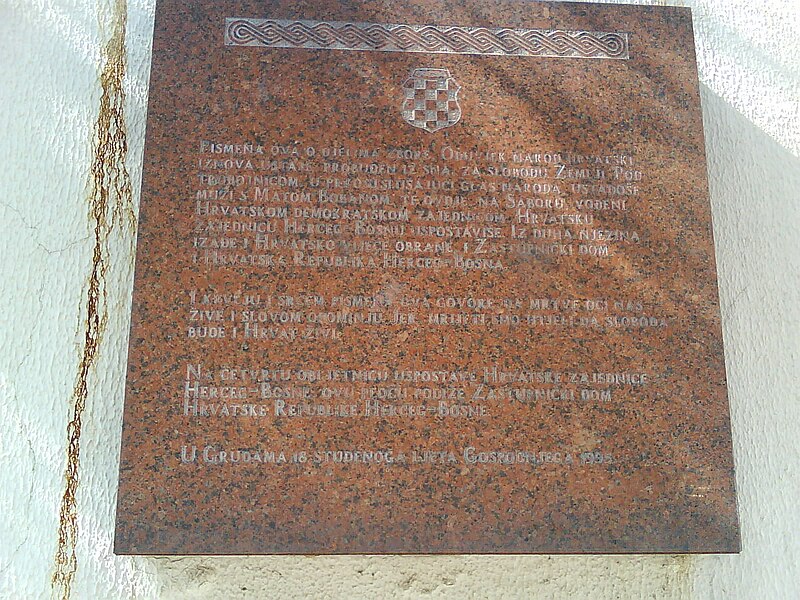

A declaration of the sovereignty of Bosnia and Herzegovina on 15 October 1991 was followed by a referendum for independence from Yugoslavia on 29 February and 1 March 1992 which was boycotted by the great majority of the Serbs. The turnout in the independence referendum was 63.4 percent and 99.7 percent of voters voted for independence.[63] Bosnia and Herzegovina declared independence on 3 March 1992 and received international recognition the following month on April 6, 1992.[64]

The Republic of Bosnia and Herzegovina was subsequently admitted as a member State of the United Nations on 22 May 1992.[65]
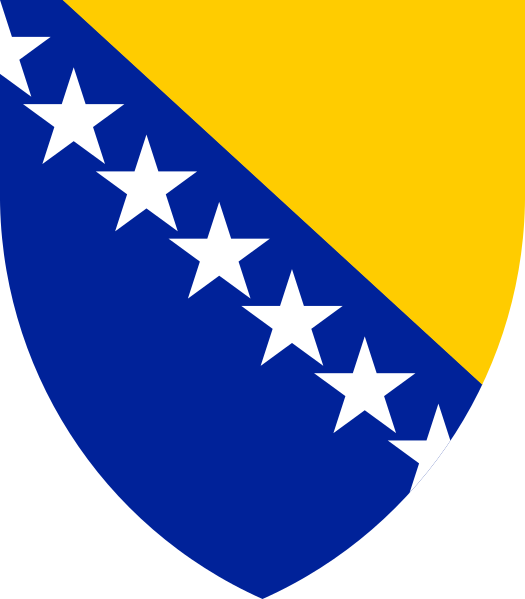
In the meantime, following a period of escalating tensions, the opening shots in the incipient Bosnian conflict were fired when Serb paramilitary forces attacked Bosnian Croat villages around Capljina on 7 March 1992 and Bosanski Brod and the Bosniak-majority town, Gorazde, on 15 March. These minor attacks were followed by much more serious Serb artillery attacks on Neum on 19 March and on Bosanski Brod on 24 March. It is disputed between Bosniaks, Croats and Serbs who the first casualties of the war are. Bosniaks consider the killing of Suada Dilberović, a Bosniak civilian woman shot dead by a sniper in April 1992, as marking the start of warfare between the three major communities.[59][66] Serbs consider an attack by Bosniaks on a Serb wedding procession and the killing of Nikola Gardović, the groom's father, on 1 March 1992 in Sarajevo's old town Baščaršija, to be the catalyst for the war.[67]

Discussions between Franjo Tuđman and Slobodan Milošević at the March 1991 Karađorđevo meeting are believed to have involved a plan to divide Bosnia and Herzegovina between Serbia and Croatia.[68]
Following the declaration of independence of the Republic of Bosnia and Herzegovina, the Serbs attacked different parts of the country. The state administration of Bosnia and Herzegovina effectively ceased to function having lost control over the entire territory. The Serbs wanted control of large parts of Bosnia and Herzegovina, and Milošević was widely accused of being the mastermind of a plan to build a "Greater Serbia", the RAM Plan. At the same time, the policies of the Republic of Croatia and its leader Franjo Tuđman towards Bosnia and Herzegovina were never totally transparent and always included Franjo Tuđman's ultimate aim of expanding Croatia's borders. Bosnian Muslims were an easy target, because the Bosnian government forces were poorly equipped and unprepared for the war.[69]
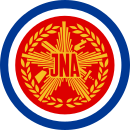
International recognition of Bosnia and Herzegovina increased diplomatic pressure for the Yugoslav People's Army (JNA) to withdraw from the republic's territory which they officially did. However, in fact, the Bosnian Serb members of JNA simply changed insignia, formed the Army of Republika Srpska, and continued fighting. Armed and equipped from JNA stockpiles in Bosnia, supported by volunteers and various paramilitary forces from Serbia, and receiving extensive humanitarian, logistical and financial support from the Federal Republic of Yugoslavia, Republika Srpska's offensives in 1992 managed to place much of the country under its control.[19]

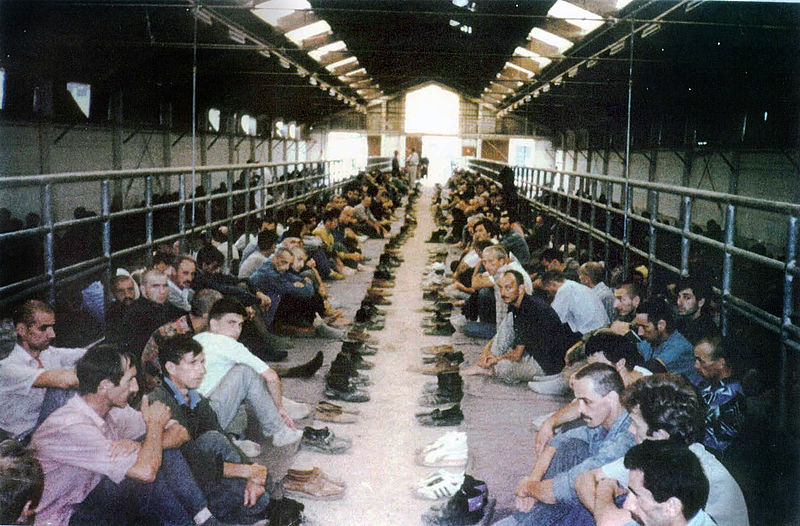
Initially, the Serb forces attacked the non-Serb civilian population in Eastern Bosnia. Once towns and villages were securely in their hands, the Serb forces—military, police, the paramilitaries and, sometimes, even Serb villagers—applied the same pattern: Bosniak houses and apartments were systematically ransacked or burnt down, Bosniak civilians were rounded up or captured, and sometimes beaten or killed in the process. 2.2 million refugees were displaced by the end of the war (of all three nationalities).[70]
Able-bodied men were separated from their families and interned in camps under a brutal regimen of abuse, murder, and sporadic group executions, whereas women and children were kept in unsanitary detention centers, deprived of food and water. Rape by Serb soldiers or policemen was commonplace at the detention centers, and victims included women and minors as young as 12 years old.[71]
Though on a significantly smaller scale, war crimes would later also be committed by Bosniaks and Croats as their military campaigns gained momentum, including the establishment of prison camps in which torture, murder and rape took place.[72][73][74][75]

In June 1992, the focus switched to Novi Travnik and Gornji Vakuf where the Croat Defence Council (HVO) efforts to gain control were resisted. On 18 June 1992 the Bosnian Territorial Defence in Novi Travnik received an ultimatum from the HVO which included demands to abolish existing Bosnia and Herzegovina institutions, establish the authority of the Croatian Community of Herzeg-Bosnia and pledge allegiance to it, subordinate the Territorial Defense to the HVO and expel Muslim refugees, all within 24 hours. The attack was launched on 19 June. The elementary school and the Post Office were attacked and damaged.[76]
Gornji Vakuf was initially attacked by Croats on 20 June 1992, but the attack failed. The Graz agreement caused deep division inside the Croat community and strengthened the separation group, which led to the conflict with Bosniaks. One of the primary pro-union Croat leaders, Blaž Kraljević (leader of the Croatian Defence Forces (HOS) armed group) was killed by HVO soldiers in August 1992, which severely weakened the moderate group who hoped to keep the Bosnian Croat alliance alive.[77]

The situation became more serious in October 1992 when Croat forces attacked the Bosniak population in Prozor. According to Jadranko Prlić indictment, HVO forces cleansed most of the Muslims from the town of Prozor and several surrounding villages.[60]
By 1993 when an armed conflict erupted between the predominantly Bosniak government in Sarajevo and the Croatian Republic of Herzeg-Bosnia, about 70% of the country was controlled by Republika Srpska. Ethnic cleansing and civil rights violations against non-Serbs were rampant in these areas. DNA teams have been used to collect evidence of the atrocities committed by Serbian forces during these campaigns.[78] The single most prominent example was the Srebrenica massacre, ruled a genocide by the International Criminal Tribunal for the former Yugoslavia. An estimated 8,372 Bosnians were killed by the Serbian political authorities.[79]

The Inter Services Intelligence (ISI) ran active military intelligence program during the Bosnian War which started in 1992 lasting until 1995. Executed and supervised by General Javed Nasir, the program distributed and coordinated the systematic supply of arms to various groups of Bosnian fighters in their fight against the Serbian war missions.[80]

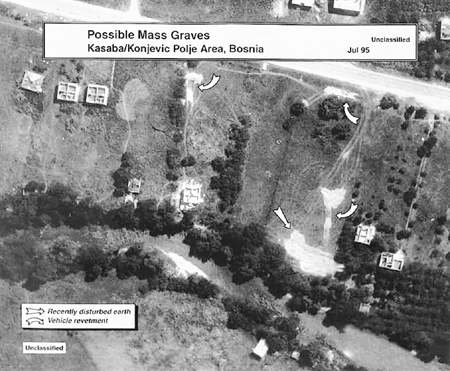
In March 1994, the signing of the Washington Accords between the leaders of the republican government and Herzeg-Bosnia led to the creation of a joint Bosniak-Croat Federation of Bosnia and Herzegovina, which absorbed the territory of the Croatian Republic of Herzeg-Bosnia and that held by the Army of the Republic of Bosnia and Herzegovina. The Federation soon liberated the small Autonomous Province of Western Bosnia.


Following the Srebrenica genocide, a NATO bombing campaign began in August 1995 against the Army of Republika Srpska. Meanwhile, a ground offensive by the allied forces of Croatia and Bosnia, based on the Split Agreement signed by Tudjman and Izetbegović, pushed the Serbs away from territories held in western Bosnia which paved the way to negotiations. In December 1995, the signing of the Dayton Agreement in Dayton, Ohio, by the presidents of Bosnia and Herzegovina (Alija Izetbegović), Croatia (Franjo Tuđman) and Serbia (Slobodan Milošević) brought a halt to the fighting, roughly establishing the basic structure of the present-day state. A NATO-led peacekeeping force was immediately dispatched to Bosnia to enforce the agreement.

The number of identified victims is currently at 97,207 (civilian and military casualties). These include 64,341 Bosniaks, 24,726 Serbs, and 7,602 Croats.[81] Recent research estimates the total number to be no more than 110,000 killed (civilians and military),[82][83][84] and 1.8 million displaced. Those declared missing are being investigated by International Commission on Missing Persons.
According to numerous International Criminal Tribunal for the former Yugoslavia (ICTY) judgements, the conflict involved Bosnia and the Federal Republic of Yugoslavia (subsequently Serbia and Montenegro)[85] as well as Croatia.[86]
At the International Court of Justice (ICJ), the Bosnian government charged Serbia of complicity in genocide in Bosnia during the war. The ICJ ruling of 26 February 2007 effectively determined the war's nature to be international, though exonerating Serbia of direct responsibility for the genocide committed by Serb forces of Republika Srpska. The ICJ concluded, however, that Serbia failed to prevent genocide committed by Serb forces and failed to punish those who carried out the genocide – in particular General Ratko Mladić – and bring them to justice.[87] Mladić was arrested in a village in northern Serbia on 26 May 2011 and, among other genocide and war crime charges, accused of directly orchestrating and overseeing the slaughter of 8,000 Bosniak men and boys.[88]

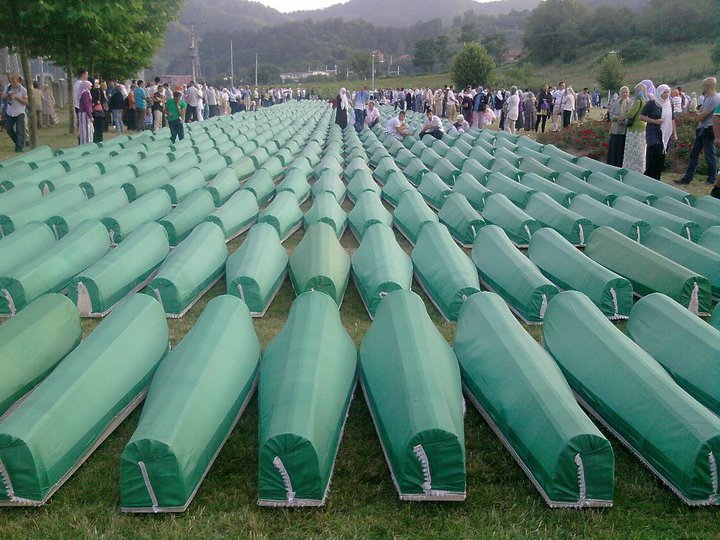
The judges ruled that the criteria for genocide with the specific intent (dolus specialis) to destroy Bosnian Muslims were met only in Srebrenica or Eastern Bosnia in 1995.[89] The court concluded that the crimes committed during the 1992–1995 war may, according to international law, amount to crimes against humanity, but that these acts did not in themselves constitute genocide.[90] The Court further decided that Serbia was the only respondent party in the case after Montenegro's declaration of independence in June 2006, but that "any responsibility for past events involved, at the relevant time, the composite State of Serbia and Montenegro".[91]
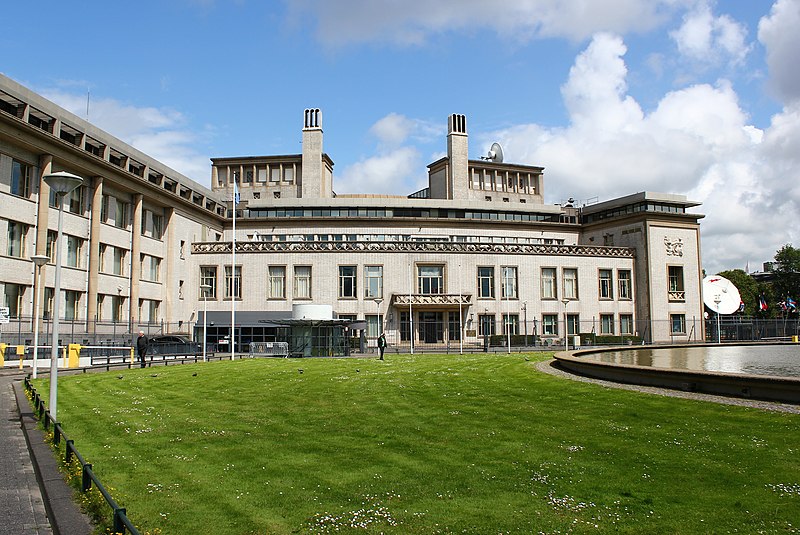

High-ranking Croat and Bosniak officials have been convicted or indicted for war crimes as well on charges related to the murder, rape, torture, and imprisonment of civilians.[92] Serbs have accused Sarajevo authorities of practicing selective justice by actively prosecuting Serbs while ignoring or downplaying Bosniak war crimes.[93]



Taken from: http://www.history.com/this-day-in-history/nato-assumes-peacekeeping-duties-in-bosnia & https://en.wikipedia.org/wiki/Bosnia_and_Herzegovina [20.12.2014]

rats
ReplyDeleterats
ReplyDelete